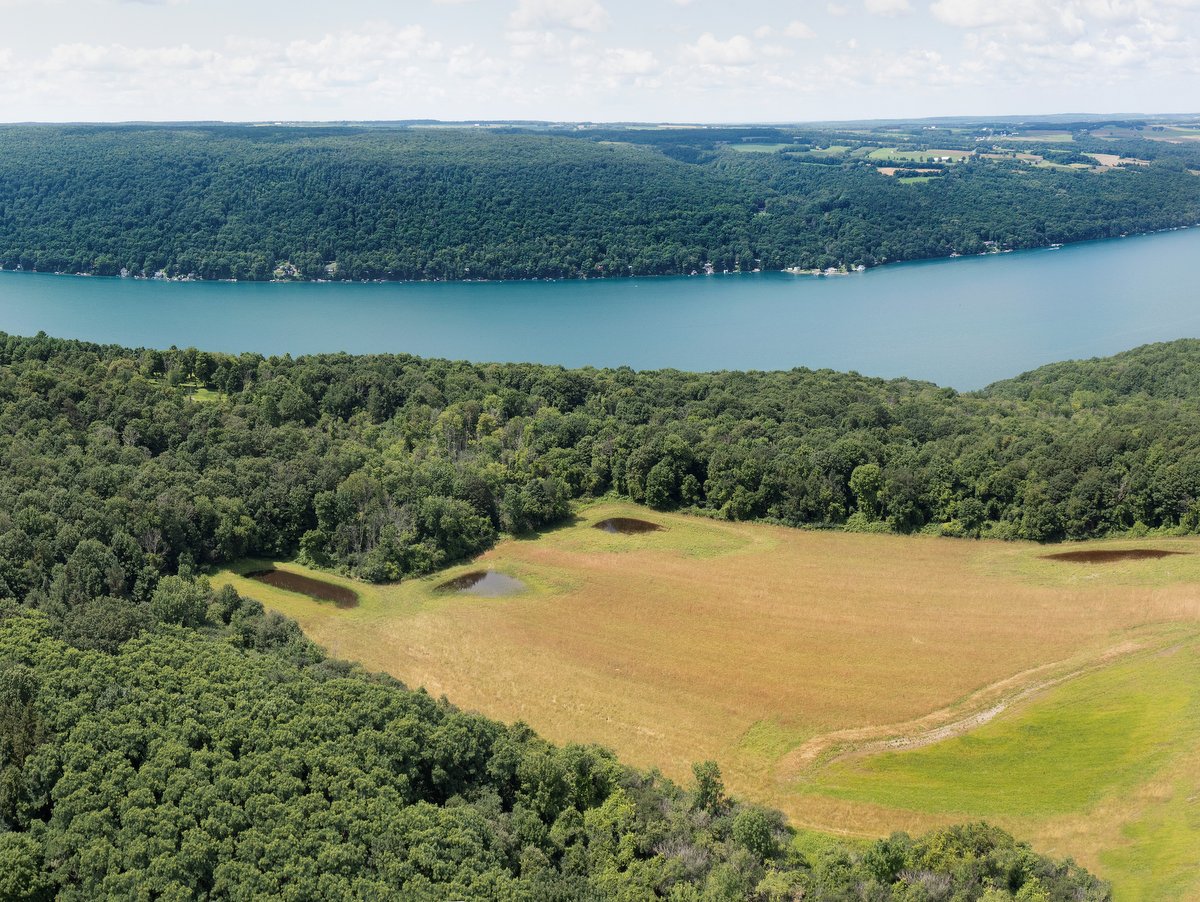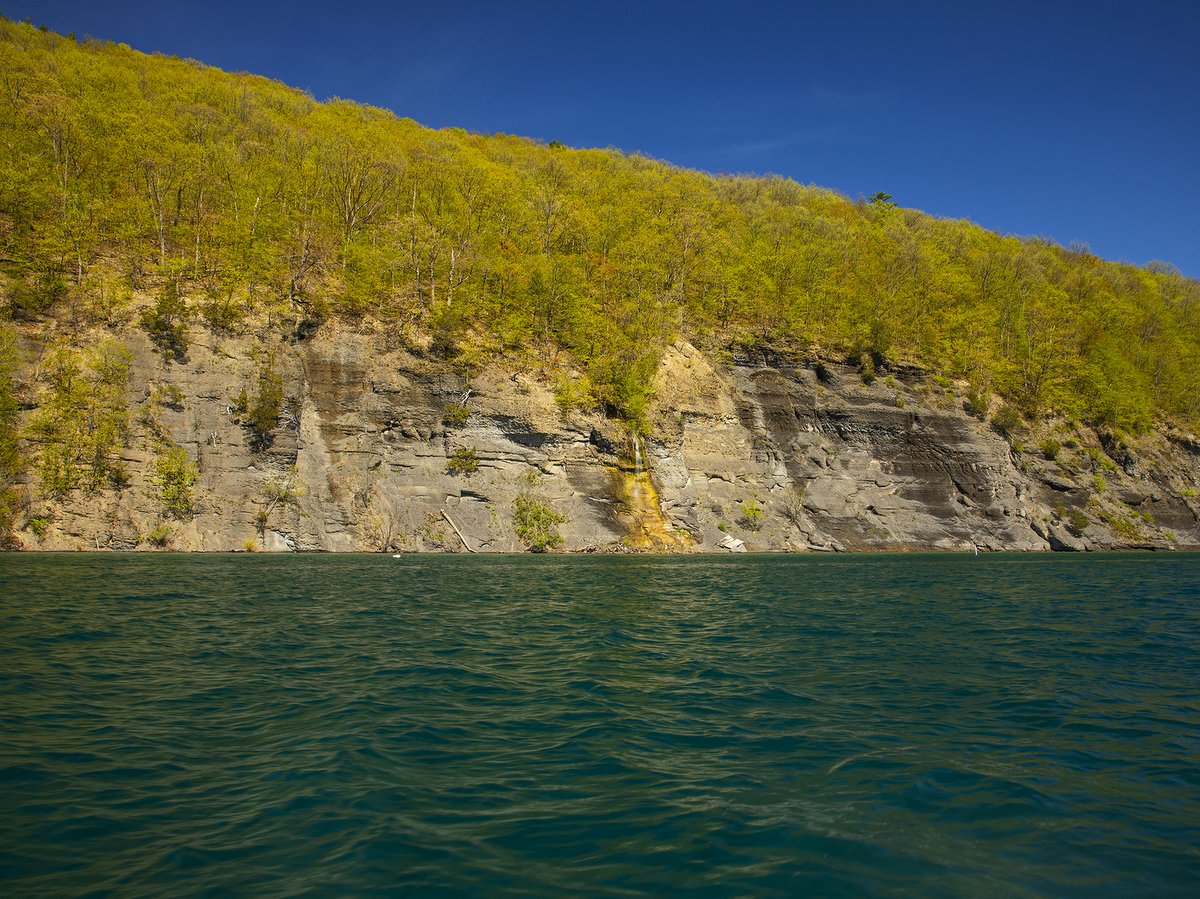Throughout history, humans have proven to be innovative and efficient, and one needs to look no further than local agriculture to see how farmers in the Finger Lakes have created technologies and implemented practices to improve crop yields and farmland production.
For years, one of the biggest concerns for farmers has been how to drain their fields and move water off their land as quickly and proficiently as possible. The Finger Lakes region has signs of this throughout, including drainage tiles underneath farm fields that flow into deep roadside ditches, quickly moving water off roadways and carrying it into our streams and lakes.
In some areas, there is an opportunity to counter these efficiencies by giving stormwater a place to settle and filter out before it enters our creeks and lakes. At a Finger Lakes Land Trust-owned conservation area on the east side of Skaneateles Lake, the organization has done just that. In partnership with the U.S. Fish & Wildlife Service’s Partners for Fish and Wildlife Program, five vernal pools were created to retain water on the property prior to its release into Skaneateles Lake, the unfiltered drinking water source for local communities and the city of Syracuse. This area, also known as the Staghorn Cliffs, is contiguous to the organization’s Cora Kampfe Dickinson Preserve and contains some of the most pristine shoreline remaining in the Finger Lakes region.
Vernal pools do more than protect water quality. They are also important wildlife habitat – providing temporary wetlands for a variety of insects, amphibians, and reptiles. Birds flock to the pools as a seasonal source of food and water.
When the FLLT launched its five-point water quality initiative in 2019, these were the types of projects the organization envisioned to enhance its typical land conservation work. The ability to protect water quality and improve wildlife habitat with key local partners is what FLLT hopes to continue to do throughout the Finger Lakes region with the support of its members and donors.



